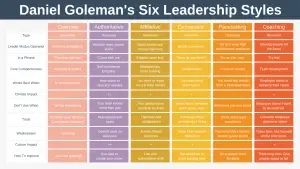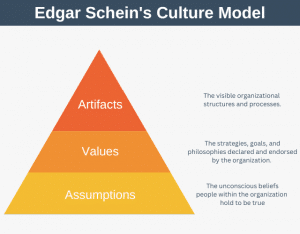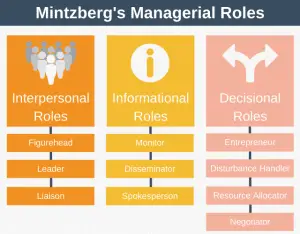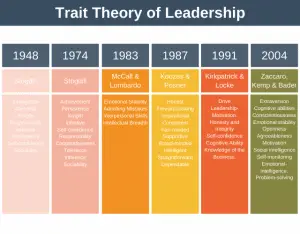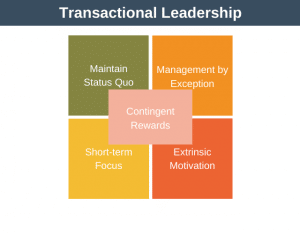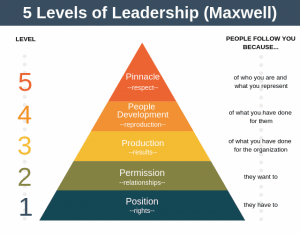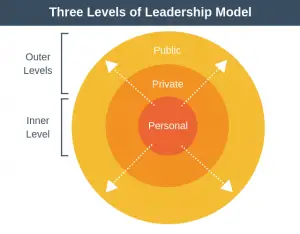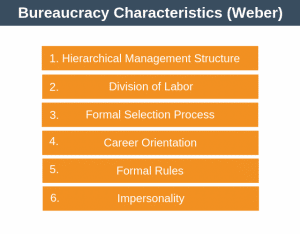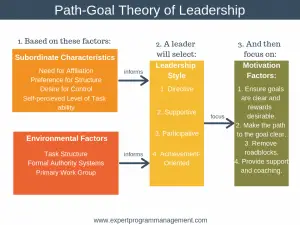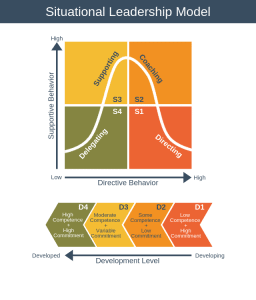The Blake and Mouton Managerial Grid provides a simple way to understand your natural leadership style. It can also be used to understand the leadership style of others.
If you were hired as the manager of a small team what would be your instinctive approach to managing your team members? Would you think only of getting tasks completed on time, or instead focus on the welfare of your team? Or perhaps you’d be concerned with balancing both?
There is no singular best management style for all situations. The Blake and Mouton Managerial Grid is useful because it allows you to determine your preferred leadership style. Once you know this you can then take steps to address your weaknesses so that you become a better all-around leader.
Background
The model was created by Robert Blake and Jane Mouton.
Blake was an American management theorist, born in Massetutics in 1918. Mouton, also an American management theorist, was born in Texas in 1930.
The grid came to be during the time when Blake and Mouton worked as consultants for Exxon. The grid tries to find the middle ground between McGregor’s Theory X and Theory Y employees.
The Blake Mouton Managerial Grid
The Blake Mouton grid is a matrix that characterizes leaders based on two dimensions:
1. Concern for People
This is the degree to which the leader considers the needs of their team members when deciding how best to complete a task. Leaders with a high concern for people will take into account each team member’s preferred type of task and their personal development needs, amongst other things.
2. Concern for Results
The original model called this dimension concern for production but it makes more sense these days to think of it as concern for results.
Leaders with a high concern for results emphasize deadlines, goals, and high productivity when determining how to achieve a task.
The basic grid is shown below:
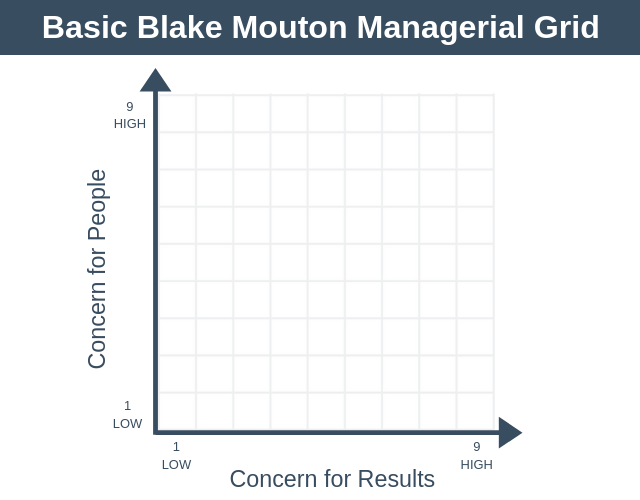
Whilst your preferred style could fall into any position on the grid, Blake and Mouton partitioned the grid into five styles of management:
- Impoverished Style.
- Produce or Perish Style.
- Middle-of-the-road Style.
- Country Club Style
- Team Style
The five leadership styles are overlayed onto the grid in the diagram below:
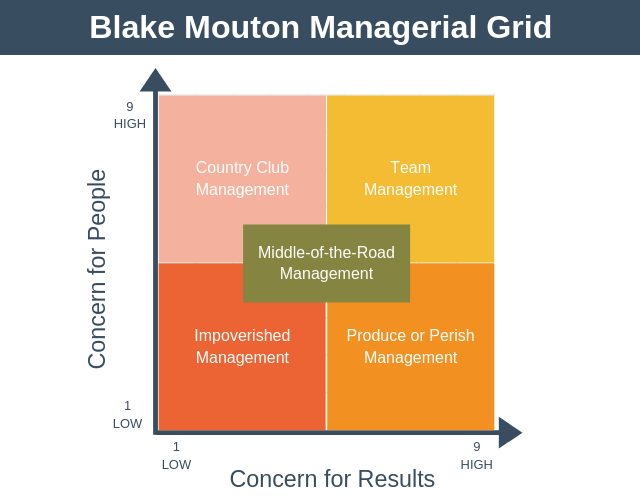
It can be easy to jump to the conclusion that the Team Management Style is the best style as it focuses strongly on both people and results, but that isn’t the full story. Every style of leadership has its place. For example, there are times when the Produce or Perish Style is most appropriate, such as when a business needs to be turned around quickly before it goes out of business.
Let’s examine each of these styles of management in more detail.
1. Impoverished Management (Low people/Low results)
You’re this type of leader if you’re indifferent to both people and results. You are not interested in getting the job done, nor are you interested in creating a motivated team.
This typically means tasks aren’t being completed to the standard required by the organization, and that team members are dissatisfied too, but you are just doing enough to keep your job. You may be able to avoid blame for failure for a while, but usually not forever.
When to Use
This style of leadership is only advisable if you have a highly motivated and competent team working for you. But even then… use with caution.
2. Produce or Perish Management (Low people/High results)
You’re this type of leader if you’re only interested in results. You don’t really care about your team. Your style is often autocratic, and you see your team as a means to an end achieve results, nothing more.
While you can produce great results they are usually short-lived, because over time team moral starts to drop as their needs are ignored. Long term it will be difficult to keep the high achievers of your team, as they will seek greener pastures.
You can be so focused on your own team delivering that you ignore the wider needs of the organization. For example, you might refuse to collaborate with another department because it’s a distraction from your targets, even though on balance this collaboration is the best thing to do for the organization.
In McGregor parlance, you’re a Theory X leader.
When to Use
Use this style in urgent situations such as when an organization needs to be turned around.
3. Middle-of-the-road Management (Medium people/Medium results)
You’re this type of leader if you seek to find the middle ground, balancing the needs of the organization against the needs of your team.
At first glance, this style of management may look like a happy medium, but it isn’t. Because of your never-ending compromise, you’ll fail to push hard for results, and you’ll also fail to meet the needs of your team.
Because neither people nor production needs are met, this type of leader delvers very average results.
When to Use
This style of leadership is only appropriate if you decide to leave one of your teams to their own devices while you focus on higher priorities.
4. Country Club Management (High people/Low results)
You’re this type of leader if you’re more concerned with the needs of your team than you are for achieving organizational results.
Your team will love working for you but your results will suffer as a result. Managers with this style of leadership often make the mistake of assuming that because their team is happy they will work hard and deliver impressive results.
Whilst the environment will be nice to work in, it won’t be productive. Ultimately, your team can end up will little respect for you because of your failure to deliver results.
When to Use
Use this style of leadership sparingly, for example, if your team has been working particularly hard recently and is in danger of burnout. However, as a long term strategy, it’s usually a recipe for disaster.
5. Team Management (High people, High results)
You’re this type of leader if you demand great results but also work hard to meet the needs of your team. According to the model, this is the best type of leader to be (most of the time).
You work to achieve long term success. This means that you’re committed to achieving the goals of the organization, but you’re also encouraging your team to commit, take responsibility, and develop themselves.
If you work for this type of leader you’re going to feel respected, trusted, empowered, and your development needs are being met. As such, you will be committed to achieving the best results you can. Here, personal needs and production needs overlap.
In McGregor parlance, you’re a Theory Y leader.
When to Use
You should strive to be this type of leader all of the time, apart from when one of the other styles may be more appropriate for a specific situation.
How to Use the Model
To use the model, follow these two steps.
Step 1: Identify Where You Are?
To identify your current position on the Blake-Mouton grid you can:
- List the last few initiatives you worked on.
- For each initiative, score your concern for people and production, then place your score onto the grid.
Are You Really as Good as You Think?
Over the years thousands of participants attended workshops and seminars run by Blake and Mouton. Before attending, 80% of managers scored themselves in the top-right Team Management quadrant.
After attending, that 80% had dropped to 20%! This means that 60% of managers think they are a lot better at leading their team than they actually are.
Now, this might have something to do with the Dunning-Kruger effect, or it could be caused by some other reason, but it is definitely something to be aware of.
Step 2: Create an Action Plan
Create a learning and action plan to help you move up and to the right of the grid.
This website contains lots of useful material you can use to help you on this journey, including interpersonal skills, leadership skills, and communication skills.
Advantages and Disadvantages
Advantages of the Blake Mouton Managerial grid include:
- It can help leaders understand their natural leadership style.
- From this, leaders can create a personal development plan to progress towards a Team Management style, if they don’t possess this already.
Disadvantages of the Blake Mouton Managerial Grid include:
- The model is overly simplistic. There are many facets to management and leadership that aren’t included in the model.
- The model is focussed on the leader and doesn’t pay attention to other factors, such as the development level of your team, the situation the organization is in, or the culture of the organization.
The Two Additional Styles
After Mouton’s death in 1987, Blake continued to develop the model and added two more styles to it (although these never appeared on the grid).
1. Opportunistic Management
Some managers can be very opportunistic, putting their own needs first. This type of manager will adapt their style to whichever style they feel will bring them the greatest personal benefit.
This type of manager is happy to manipulate their team and the situation to get what they want. The opportunistic style obviously can’t be drawn on the grid as it can appear anywhere.
2. Paternalistic Management
This type of manager alternates between Country Club and Produce or Perish styles of management.
Whichever of the two styles they use, this type of manager is all-knowing about both production and the team’s needs.
If their team gels with this style, then this type of leader can be supportive to work for. However, this type of leader does not welcome the team coming up with their own ideas that conflict with theirs. They will see that as a challenge to their position, trust, and authority.
Blake Mouton Grid Summary
The Blake and Mouton Managerial Grid provides a simple way to understand the leadership style of yourself or others. Once you’ve understood where your leadership is right now you can then make a plan to address your weaknesses so you become a better manager.
